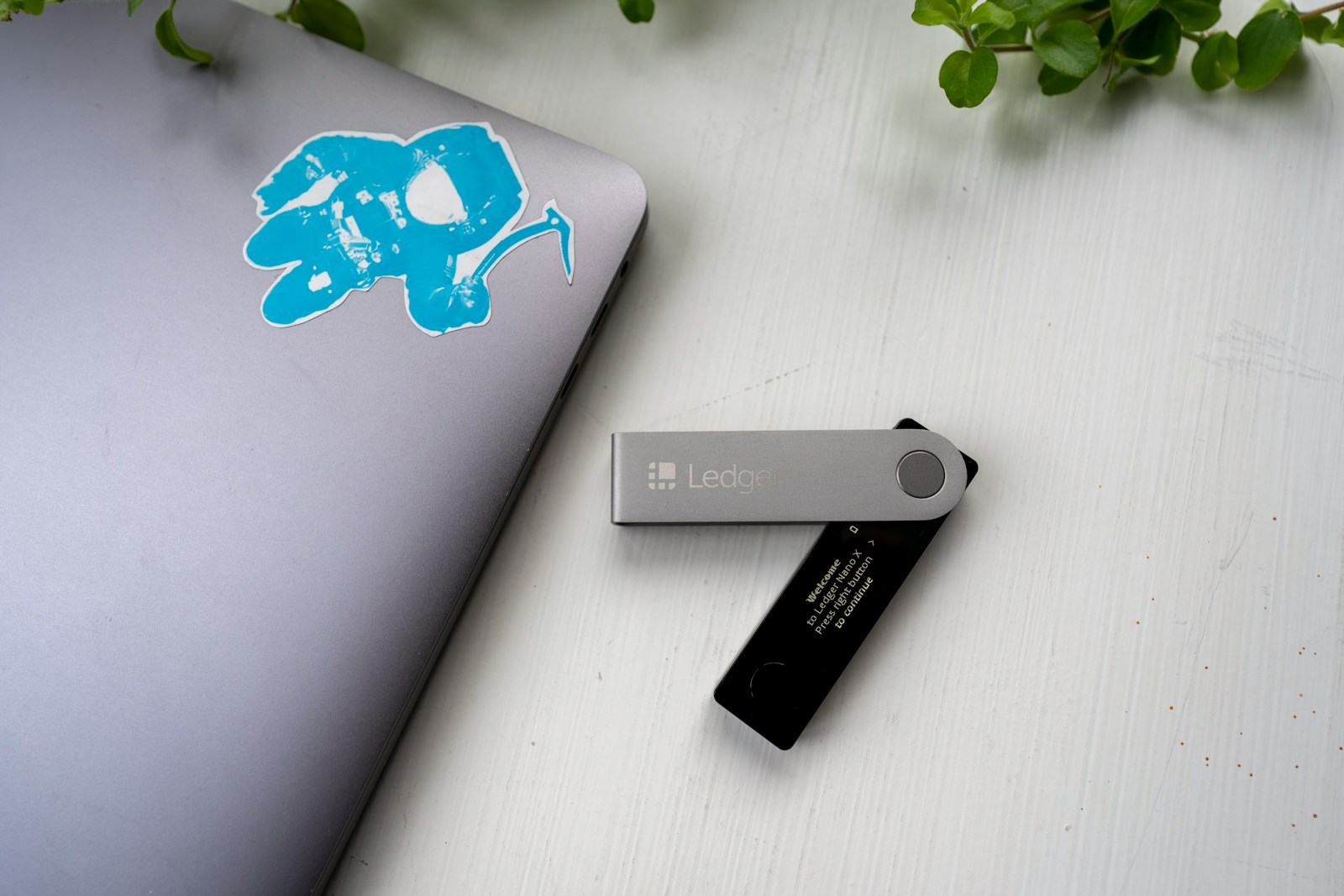
To gain access to most proof-of-stake networks, users must meet a specific threshold of tokens locked. This entry barrier varies widely: Ethereum 2.0 demands 32 ETH, while Cardano requires just 10 ADA delegated to a pool. Such values define the baseline for active involvement and directly impact network decentralization by limiting or broadening the pool of validators.
Networks often calibrate these thresholds based on security models and economic incentives, balancing between inclusivity and protection against Sybil attacks. For instance, Polkadot’s minimum stake hovers around 120 DOT, ensuring participants have enough skin in the game to behave honestly but not so high as to exclude smaller holders entirely. The question remains–how do these staking floors affect your ability to participate effectively?
Recent market volatility has shifted the real-world cost of entry significantly. When token prices surge, previously accessible staking levels may become prohibitive for average users. Conversely, falling prices can lower these barriers temporarily but may reduce overall network security if too many undercapitalized nodes join. Evaluating these thresholds alongside token valuation is crucial before committing funds.
Some platforms introduce tiered access systems where partial stakes grant limited rights or rewards, providing alternatives for those who cannot meet full entry criteria. Others enable pooling mechanisms that aggregate smaller contributions into collective stakes surpassing set limits. These approaches mitigate exclusion risks but come with trade-offs in control and reward distribution.
Ultimately, understanding each protocol’s precise locking requirements helps anticipate both technical participation constraints and economic implications. Are you prepared to cross the required threshold? Assess your capital against current benchmarks and explore pooling options if direct access proves challenging.
Staking requirements: minimum amounts for participation [Mining & Staking mining]
Access to staking protocols typically mandates a defined threshold of tokens, which acts as an entry barrier restricting casual or small-scale involvement. For instance, Ethereum’s consensus mechanism requires holders to lock up exactly 32 ETH to run a validator node independently, establishing a clear quantitative criterion for direct network contribution. This fixed entry point ensures that only participants with sufficient capital can influence block production and validation processes.
Different networks impose varying token holdings as prerequisites for engagement in their consensus algorithms. Cardano demands at least 10 ADA delegated towards a stake pool to receive rewards, whereas Polkadot sets a higher benchmark near 120 DOT for nominator status. These diverse numerical standards highlight how projects balance decentralization goals against security concerns by tuning the access thresholds accordingly.
Comparative technical analysis of locking limits
The disparity between proof-of-stake systems’ participation criteria often reflects their underlying architecture and targeted security model. Higher stakes generally correspond to increased voting weight but may elevate the financial barrier limiting widespread involvement. For example, Tezos uses a minimum delegation of 8,000 XTZ, emphasizing network stability over ease of access, while Cosmos operates with significantly lower token entry points around 1 ATOM.
A practical illustration lies in Ethereum’s shard chain roadmap aiming to reduce single-node capital demands via pooled staking services and liquid derivatives such as Lido or Rocket Pool. These solutions democratize access by aggregating smaller holdings into collective stakes that meet protocol criteria without forcing individual investors to meet high thresholds themselves.
Mining-related staking models also reveal varying conditions tied to hardware capabilities alongside token quantity commitments. In hybrid consensus blockchains like Algorand, participants must not only commit certain coins but also demonstrate computational reliability and uptime metrics, effectively combining economic and operational parameters to qualify for reward eligibility.
The decision on setting these thresholds is inherently linked to incentive alignment and network resilience strategies. Networks seek a balance: low enough barriers encourage mass adoption and liquidity inflow; high enough stakes deter manipulation and secure validation honesty. Thus, these parameters are periodically reviewed alongside technological upgrades and market shifts.
An emerging trend involves leveraging third-party custodial pools which facilitate staking with fractional contributions below native limits. While these services broaden user accessibility and reduce entry impediments substantially, they introduce trust layers that may contradict decentralization principles depending on operator transparency and governance structures.
Minimum Stake for PoS Coins
The entry threshold to validate transactions and secure networks in Proof-of-Stake (PoS) systems varies significantly among different cryptocurrencies, often setting a barrier that determines who can actively engage. For example, Ethereum requires a stake of 32 ETH, currently valued at tens of thousands of dollars, which forms a substantial financial gate for individual validators. This figure is deliberately set to balance network security with decentralization by ensuring that participants have enough vested interest without excluding smaller holders entirely.
On the other hand, coins like Cardano impose a comparatively lower barrier: delegators can participate in consensus with as little as 10 ADA, approximately $15-$20 under current market conditions. This reduced access point encourages wider distribution of validation rights and supports greater network inclusiveness. However, such lower thresholds may also influence the concentration of staking power in large pools, raising questions about potential centralization risks.
Technical Barriers and Their Impact on Network Dynamics
Thresholds are not arbitrary but stem from technical protocol choices designed to optimize performance and security. For instance, Polkadot enforces a minimum stake amount that dynamically adjusts based on total network bonding to maintain effective validator sets around 100 nodes. This adaptive mechanism ensures scalability while preventing Sybil attacks by making it economically prohibitive to spin up numerous low-stake validators. The challenge here lies in maintaining equilibrium between accessibility and resilience against malicious actors.
Moreover, some protocols introduce layered participation criteria beyond mere token quantities. Tezos, for example, requires “rolls”–bundles of tokens equating to roughly 8,000 XTZ–to activate baking rights. Such design introduces additional complexity but improves operational efficiency by limiting active validators while allowing token holders to delegate rights easily through third-party services. This hybrid approach lowers the entry barrier for average users without compromising system integrity.
Recent market trends reveal fluctuations in staking thresholds influenced by price volatility and network upgrades. Solana’s fixed minimum stake of 0.1 SOL (less than $5) encourages broad access; however, frequent congestion episodes have prompted discussions about raising this limit temporarily to mitigate spam attacks and enhance throughput stability. These adjustments exemplify how economic incentives intertwine with technical parameters in governing participation rules over time.
Ultimately, analyzing staking entry points across diverse ecosystems highlights trade-offs between inclusion and security layers embedded within protocol designs. While higher token commitments foster stronger alignment among validators’ interests and deter bad actors effectively, they risk alienating small-scale stakeholders seeking governance involvement or passive income generation opportunities. Conversely, minimal barriers promote democratization yet require robust delegation frameworks or slashing penalties to safeguard network health against diluted responsibility.
Token lock-up periods explained
Token lock-up durations establish a mandatory interval during which users must withhold their digital assets after committing them to network protocols. These intervals directly impact access to rewards and governance rights, often setting a temporal threshold that influences user engagement and network security. For instance, Ethereum 2.0 mandates a staking lock-up that can extend from several months up to multiple years, depending on network conditions and withdrawal phases, thereby defining precise entry conditions for validators.
Protocols typically specify thresholds not only in terms of quantity but also timeframes, creating dual barriers that regulate who may join consensus mechanisms or liquidity pools. Cardano’s delegation scheme requires delegators to maintain locked tokens throughout an entire epoch cycle (approximately five days), aligning participation incentives with network stability. Such models ensure that sudden exits do not destabilize the ecosystem by enforcing both capital and temporal commitments.
Impact of temporal constraints on token commitment
Lock-up schedules vary widely among platforms, reflecting distinct risk models and incentive structures. Solana enforces a minimum commitment duration of roughly two weeks post-delegation before unlocking assets becomes possible, balancing flexibility against security demands. Conversely, Tezos introduces rolling cycles where tokens remain bound until the completion of multiple baking cycles–each lasting about three days–thereby extending effective hold times without rigid long-term immobilization.
These timing requirements affect liquidity management strategies significantly. Investors must weigh potential yield benefits against restricted access intervals when determining entry points or reallocating holdings across competing projects. Notably, some DeFi ecosystems implement staggered unlocks or partial withdrawals to mitigate abrupt capital flight risks while preserving sufficient control over participation thresholds. Understanding these technical parameters allows stakeholders to optimize asset deployment aligned with market volatility and protocol-imposed constraints.
Impact of Stake Size on Rewards
The amount locked in a blockchain consensus mechanism directly influences the rewards a participant can claim. Many networks establish a threshold that defines the smallest value an individual must commit to gain access to reward pools. This barrier ensures network stability by filtering out trivial stakes while simultaneously affecting who gains entry to validation or delegation roles.
For example, Ethereum 2.0 requires 32 ETH as the base quantity to run a validator node, creating a significant investment hurdle. This figure is carefully calibrated to balance decentralization with security, but it also means smaller holders must pool resources or rely on third-party services to engage effectively. Such conditions shape the ecosystem’s dynamics by concentrating validation power among those able to meet these financial criteria.
Reward Distribution Relative to Locked Capital
Rewards scale proportionally with the stake size in many proof-of-stake models, yet this relationship is not strictly linear due to protocol-specific mechanisms like diminishing returns or penalty structures. In Cardano’s case, larger delegations receive more rewards; however, saturation points limit earnings beyond certain thresholds, encouraging balanced distribution rather than monopolization.
Analyses from Tezos demonstrate that while higher commitments yield greater absolute returns, the percentage yield slightly decreases past specific stake values because of dilution effects within large pools. Participants must therefore consider optimal stake volumes that maximize reward efficiency without incurring unnecessary risk from over-concentration.
Access Constraints and Network Security Considerations
Entry barriers defined by locked capital sizes serve dual purposes: they prevent spam attacks and align incentives for long-term network support. Polkadot’s design implements a minimum stake requirement for nominators and validators alike, ensuring that only entities with significant vested interest influence consensus outcomes.
This approach enhances security but may inadvertently exclude smaller investors lacking sufficient funds upfront. To mitigate this, some ecosystems facilitate pooled staking arrangements where multiple stakeholders combine their holdings to meet access prerequisites collectively. These collaborative strategies democratize involvement while preserving core security standards.
Diverse Participation Models and Their Effect on Reward Dynamics
A notable case study lies in Cosmos Hub’s model where delegation thresholds are relatively modest compared to Ethereum 2.0, enabling broader participation at reduced initial capital cost. This inclusivity translates into a more distributed validator set but demands careful calibration of inflation rates and reward curves to maintain incentivization across varying stake sizes.
Conversely, networks imposing high entry limits often experience increased centralization risks but benefit from simplified governance and potentially lower operational overheads per node. Observing Binance Smart Chain reveals how low barriers combined with competitive rewards attract numerous small-scale validators but raise questions about long-term decentralization quality.
Evolving Protocol Parameters and Market Influence
Dynamic adjustments in commitment thresholds reflect ongoing attempts by developers to optimize accessibility without compromising performance metrics. Recent upgrades on Avalanche adjusted lockup amounts upward amid rising asset valuations, responding pragmatically to shifting market contexts and user behavior patterns.
This adaptive stance demonstrates how economic factors interplay with technical configurations: when native tokens appreciate significantly, static entry levels might unintentionally elevate barriers for newcomers unless protocols recalibrate accordingly. Thus, continuous monitoring of both internal parameters and external market forces is essential for sustaining equitable reward systems.
Hardware needs for staking nodes
Operating a node that validates transactions on a proof-of-stake blockchain imposes distinct hardware entry conditions that vary significantly between networks. The computational barrier typically involves processing power, memory capacity, and network connectivity capable of handling consensus algorithms and cryptographic tasks with minimal latency. For instance, Ethereum’s consensus layer recommends at least a quad-core CPU with 16 GB RAM alongside an SSD exceeding 1 TB to maintain ledger synchronization without delays–this forms the baseline threshold below which participation becomes impractical.
Beyond raw specifications, reliability and uptime play a crucial role in node operation viability. Hardware must support continuous online presence to avoid penalties or slashing risks inherent in many protocols. A Raspberry Pi 4, commonly cited as an accessible device for smaller chains, often fails to meet these standards when network throughput spikes or during complex state transitions. Thus, choosing components with proven stability under load is fundamental to surpassing the entry barrier into active validation roles.
Technical considerations shaping hardware demands
Memory bandwidth and storage I/O speeds directly influence the speed at which a node can process new blocks and validate state changes. Networks like Cardano emphasize disk performance due to their extended UTXO model requiring frequent read/write operations. Empirical tests show that NVMe drives reduce block processing times by approximately 30% compared to SATA SSDs, lowering the risk of falling behind consensus deadlines. Consequently, participants should weigh investment in high-performance SSDs against the staking thresholds dictated by each protocol’s design.
Network interface capabilities also define operational feasibility; nodes need low-latency connections with consistent throughput over 100 Mbps in many cases. Inadequate bandwidth or unstable connections create a critical bottleneck that inhibits timely block propagation–a common cause of missed rewards or forced exit from validator sets due to inactivity penalties. Case studies from Solana validators reveal that upgrading from consumer-grade routers to enterprise-level networking gear decreased downtime incidents by nearly 40%, exemplifying how infrastructural upgrades impact node effectiveness.
Finally, power consumption and cooling solutions warrant attention given long-term deployment scenarios where energy efficiency impacts both operational cost and environmental footprint. Data centers hosting Polkadot validators demonstrate that energy-efficient CPUs paired with optimized cooling reduce heat-related throttling events, ensuring sustained throughput above required validation thresholds. This balance between hardware capability and resource management frequently determines whether operators can maintain competitive staking positions amid increasing protocol demands.
Comparing mining vs staking minimums
Access to blockchain consensus mechanisms often hinges on defined entry thresholds, which differ markedly between mining and validating via delegated consensus protocols. Mining typically imposes a barrier in the form of hardware costs and energy consumption rather than an explicit token stake. For example, Bitcoin mining requires significant upfront investment in ASIC devices, with no fixed digital asset threshold to begin operations; instead, effective participation depends on computational power and electricity availability.
Conversely, validating network transactions through delegated proof-of-stake or similar algorithms demands holding a certain quantity of native tokens as a qualification criterion. Ethereum 2.0 specifies a threshold of 32 ETH to run a validator node independently, establishing a clear numeric barrier that limits direct engagement to those who can commit this volume. This contrasts sharply with mining’s reliance on physical resources rather than locked capital.
Technical implications of entry barriers
The primary obstacle for miners lies in the initial acquisition and maintenance of specialized equipment, which can cost tens of thousands of dollars and become obsolete rapidly due to technological progress. This physical investment serves as the gatekeeper rather than any prescribed financial deposit. Staking mechanisms introduce an economic threshold directly linked to native coin holdings–users must secure and lock an exact sum within the protocol to gain validation rights.
Take Cardano’s Ouroboros protocol as an illustration: delegation pools require pool operators to commit a pledge amount that impacts their likelihood of block production rewards. Here, the barrier is dynamic and adjusts according to network parameters and market price fluctuations, affecting accessibility for smaller holders differently than fixed hardware costs affect miners.
Minimum amounts for staking participation also influence decentralization levels by potentially excluding smaller investors unable or unwilling to commit sizable stakes upfront. Mining decentralization depends more heavily on geographic factors such as electricity cost distribution and supply chain logistics for hardware components rather than strict numerical thresholds within the protocol itself.
Conclusion: Calculating the Stake Threshold for Network Entry
Determining the exact stake needed to enter a network involves balancing protocol-specific entry criteria against economic incentives designed to secure consensus. The barrier is rarely arbitrary; it reflects a calculated threshold that ensures validators have sufficient collateral at risk, deterring malicious behavior while enabling broad participation.
For instance, Ethereum 2.0 enforces a fixed stake of 32 ETH to activate validator status, setting a clear numeric gate that aligns with security and decentralization goals. Contrastingly, networks like Polkadot use dynamic bonding requirements influenced by total issuance and validator set size, illustrating how protocols tailor staking levels to evolving network states.
Key Technical Insights and Future Directions
- Threshold Calibration: Precise determination of entry amounts must account for inflation rates, slashing penalties, and reward structures. Networks often adjust parameters in response to participation shifts or market volatility, highlighting the need for flexible mechanisms rather than static values.
- Barrier Effects on Decentralization: Elevated staking floors can unintentionally centralize control within wealthy entities. Lowering these barriers or introducing pooling solutions may democratize access but requires robust safeguards against Sybil attacks.
- Algorithmic Adaptation: Emerging consensus models propose adaptive stake requirements based on real-time metrics such as transaction volume or network load, offering a more granular approach to defining participation thresholds.
The broader impact extends beyond individual chains; as cross-chain interoperability matures, understanding stake calibration becomes critical for multi-network validators optimizing capital allocation. Will we see standardized frameworks for entry parameters across ecosystems? Possibly–especially as DeFi integrations demand predictable staking commitments.
In sum, calculating the necessary deposit hinges on a nuanced interplay of protocol rules and economic incentives designed to sustain security without erecting prohibitive barriers. Future protocols will likely embrace dynamic models that respond fluidly to network conditions while maintaining accessible yet secure gates for new entrants.








